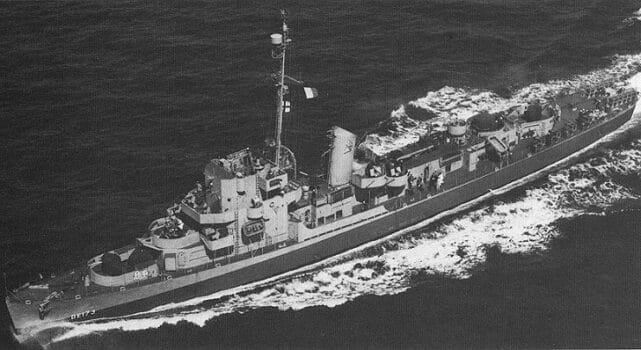Philadelphia Experiment: Story, Fiction, and the Fog of Conspiracy
Shopping Ads: Antique Oil Paintings On Canvas For Sale. Limited Originals Available 💰😊
Authentic hidden masterpieces, Explore old master antique oil paintings from the Renaissance and Baroque eras. From 15th-century to 18th-century Antique Paintings. Bring the Renaissance and Baroque in your home. Shop Now!
🎨 Antique Oil Paintings On Canvas Renaissance, Baroque Art Antique Oil Paintings, Make Offer 16th to 18th Century Portrait Paintings
In the murky world where science meets secrecy, few legends stir the imagination quite like the Philadelphia Experiment. A tale shrouded in government cover-ups, vanishing warships, time travel, and human tragedy, the story seems almost too fantastical to believe. Yet, it persists, retold in books, whispered in documentaries, and dissected in forums across the internet.
Was there really a secret naval experiment in 1943 that rendered a ship invisible? Did it teleport from Philadelphia to Norfolk in the blink of an eye? Were sailors fused to the hull of the ship, driven mad by the unnatural forces unleashed by their own government?
Or was it all just an elaborate hoax, a legend born from the fertile mind of a troubled man during the Cold War?
Let’s dive into the mystery of the Philadelphia Experiment, explore its supposed mission, analyze what supposedly happened, and examine whether it could be a real story, or a brilliant fabrication wrapped in the language of pseudoscience and paranoia.
The Spark of the Legend
The story begins in the early 1950s, when a man named Carl Meredith Allen, using the alias Carlos Allende, began corresponding with Morris K. Jessup, an astronomer and author who had written a book titled The Case for the UFO. Jessup speculated about antigravity and other unconventional scientific ideas, which seemed to resonate with Allende.
In a series of cryptic, handwritten letters, Allende claimed to have witnessed a remarkable event in 1943: the teleportation of the USS Eldridge (DE-173), a U.S. Navy destroyer escort, from the Philadelphia Naval Shipyard to Norfolk, Virginia, and back again in a matter of minutes. Allende described how the ship became invisible, surrounded by a greenish-blue haze, and then disappeared entirely.
He claimed he had been aboard the SS Andrew Furuseth, a nearby merchant ship, and witnessed the event from a distance. The experiment, Allende said, was based on Einstein’s “Unified Field Theory”, a theoretical framework that sought to combine electromagnetism and gravity into a single, coherent model.
But according to Allende, the experiment had gone horribly wrong. Sailors were said to have suffered gruesome fates, some fused into the metal of the ship, others driven insane by what they had seen or experienced. He alleged that time travel was involved and that the Navy had covered it all up.
The Philadelphia Experiment Mission
If we take Allende’s letters and the lore that followed at face value, the mission of the Philadelphia Experiment was to develop a form of cloaking technology using powerful electromagnetic fields. The idea was to make warships invisible to radar, and possibly even to the naked eye, by bending light and radio waves around them, much like a mirage in the desert.
The supposed goals included:
Achieving radar invisibility to shield ships from enemy detection.
Exploring teleportation or instantaneous movement via manipulating space-time.
Experimenting with electromagnetic fields to disrupt the ship’s visibility on all spectrums.
The story contends that the military was spurred on by Einstein’s incomplete work and Nikola Tesla’s early theories on wireless energy. In this version, science-fiction-esque dreams were merged with military pragmatism in a desperate wartime effort to gain a strategic edge over the Axis powers.
If this account is to be believed, the Philadelphia Experiment was not simply about technological advancement, it was an early attempt at breaking the very fabric of physical reality.
What Happened in the Philadelphia Experiment?
The most popular version of the tale describes the event as occurring on October 28, 1943. On that day, a series of electromagnetic generators installed on the USS Eldridge were allegedly activated.
Witnesses reported a strange glow surrounding the ship, followed by its sudden disappearance. According to lore, the ship instantaneously reappeared in Norfolk, Virginia, over 200 miles away, only to vanish again and return to Philadelphia within minutes.
It’s said that something went horribly wrong during this second jump.
Some sailors became disoriented and violently ill.
Others were found partially embedded in the bulkhead or deck, fused into the ship as if they’d melted into the metal.
A few were said to have vanished entirely, while some supposedly reappeared days or weeks later, confused, traumatized, or mentally unstable.
Others reported experiencing “time loops”, temporary amnesia, or the sensation of floating out of time.
Some versions of the story even claim that a few crew members materialized in the future, only to be forcibly brought back by government agents.
Needless to say, the Navy has repeatedly denied that such an experiment ever took place.
The Montauk Connection and Time Travel
The Philadelphia Experiment legend grew legs in the 1980s with the publication of The Montauk Project: Experiments in Time. This book claimed that survivors of the Eldridge were later involved in secret government experiments at Montauk Air Force Station in New York.
These alleged experiments, according to self-proclaimed whistleblowers, involved psychological warfare, mind control, teleportation, and time travel.
According to this expanded mythos:
The Philadelphia Experiment opened a rift in time-space.
The rift was connected to further research at Montauk.
A young man named Duncan Cameron, allegedly a sailor aboard the Eldridge, became a central figure in these time experiments.
The Montauk Project introduced new elements into the narrative, such as aliens, extra-dimensional beings, and psychic powers, turning the original story into a sprawling conspiracy epic.
Although no credible evidence supports these claims, their influence on pop culture has been undeniable, especially in media such as The X-Files, Fringe, and Stranger Things.
Skepticism and Scientific Rebuttal
Critics have thoroughly debunked the Philadelphia Experiment story. The USS Eldridge’s actual logs contradict the myth entirely. According to declassified records, the ship was never in Philadelphia in October 1943. It was in the Bahamas, part of convoy escort missions.
Historians and naval personnel have dismissed the tale as impossible, citing the sheer implausibility of the science involved. The physics behind making a ship invisible or teleporting it across the eastern seaboard simply don’t hold up under scrutiny, especially with 1940s-era technology.
Carl Allen (Carlos Allende) himself is a dubious source. He had a history of mental illness and erratic behavior. Even Morris K. Jessup, the author who first corresponded with him, eventually came to doubt his credibility, before dying by suicide in 1959 under mysterious but non-conspiratorial circumstances.
Still, Jessup’s annotated copy of The Case for the UFO, filled with Allende’s strange notes, was photocopied and distributed among Navy officers, adding to the intrigue.
In the end, mainstream historians, scientists, and skeptics all agree: The Philadelphia Experiment almost certainly never happened.
The Power of the Myth
So if it didn’t happen, why has the Philadelphia Experiment endured?
Because it taps into something fundamental: the fear that governments know more than they’re telling us. The idea that military science operates on the edge of the known, experimenting in secret, using humans as test subjects, these are deeply resonant themes, especially in the post-WWII and Cold War eras.
There’s also the allure of the unknown:
What if the boundaries of space-time can be bent?
What if we accidentally slip into another dimension?
What if history has already recorded such an event, but it’s been buried?
These questions keep the legend alive, not because it’s factual, but because it feels possible in a universe we still don’t fully understand.
Pop Culture Legacy
The Philadelphia Experiment has inspired a wide range of films, novels, and shows:
The 1984 film The Philadelphia Experiment, which dramatized the event, gave it a new generation of believers.
Its sequel (The Philadelphia Experiment II) brought time-traveling Nazis into the mix.
Shows like Fringe and Stranger Things borrow heavily from the “Montauk” storyline, which itself grew from the Philadelphia Experiment myth.
These portrayals cemented the legend not as a footnote in naval history, but as a fixture of American conspiracy folklore.
Real or Hoax?
Was the Philadelphia Experiment real?
Unknown: There’s no credible evidence, no consistent eyewitness testimony, and no scientific foundation for the fantastical claims. It likely started as a combination of misunderstandings, mental illness, and imaginative storytelling, later evolving into a modern myth enhanced by Cold War paranoia and science fiction aesthetics.
And yet, the story remains compelling because it speaks to larger truths:
Our fascination with secret technology.
Our suspicion of authority.
Our desire to believe that extraordinary things might just be possible.
In the end, the Philadelphia Experiment may not be a tale of what did happen, but rather a parable about what could happen when we reach beyond the limits of knowledge and dare to meddle with the fabric of reality.




